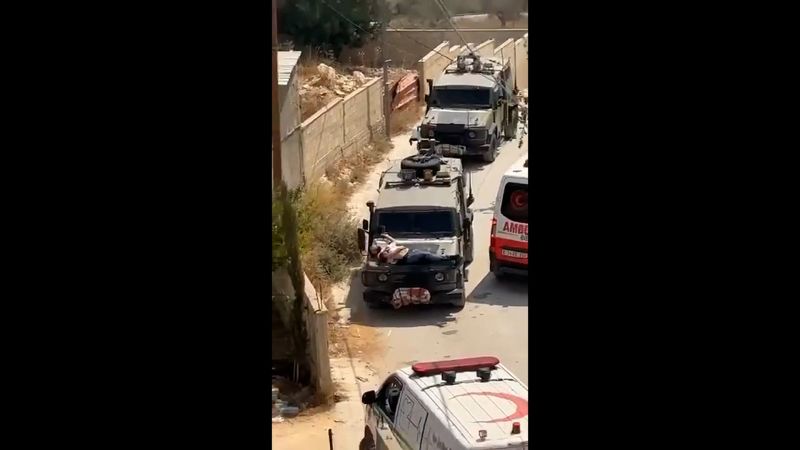In an unexpected turn of events, the Israeli military utilized an unusual method of transferring an injured Palestinian man, strapping him improbably to the hood of their jeep. This episode, which caused significant controversy on a global scale, took place in the restless landscape of the Israeli-Palestinian conflict, an area fraught with tension, aggression, and episodic flare-ups of violence.
On the day of this unprecedented event, the Israeli Defense Forces (IDF) were conducting what they termed was a routine operation. The Palestinian man in question was reportedly injured during a conflict, the details of which remain convoluted. Government sources suggest he was part of a protest that turned violent, while spectators claim he was an innocent bystander caught in a crossfire, a hapless victim of circumstances beyond his control.
Once the man was injured, he reportedly received rudimentary medical attention at the scene before, in a shocking turn, being bound onto the hood of the jeep. Photos and videos capturing this act quickly began to circulate on social media platforms, causing a wave of outrage worldwide. Many observers were appalled at what they perceived as an inhumane and degrading treatment of an individual already in distress.
Indeed, this act raises a volley of questions regarding the guidelines and procedures followed by the IDF pertaining to the treatment of injured individuals under their control, whether combatants or civilians. It appears that there was an alarming failure in the basic principles of human rights and violation of Geneva Conventions which insists that all wounded individuals be treated humanely, irrespective of circumstances.
In the aftermath of this incident, the IDF declared that they had instituted an internal inquiry to review the processes that led to this unusual treatment of the injured man. The spokesperson for the Israeli military further defended the soldiers’ actions, stating that the Palestinian was tied to the vehicle to protect him from further harm as they navigated through a mob. However, such justifications have failed to quell the international uproar elicited by the incident.
On the other hand, leaders within the Palestinian community, human rights activists, and international observers have called for a transparent and unbiased investigation into the incident. They believe that such an enquiry is critical in ensuring that such acts do not set a precedent for future handling of similar situations.
This incident has also given rise to debates about the broader issues within the Israeli-Palestinian conflict. Critics argue that this is symbolic of the dehumanization of Palestinians, while others contend that the episode reveals the complexities and perils faced by the Israeli forces amidst mounting tensions.
Regardless of one’s perspective, the incident of the Israeli military strapping an injured Palestinian man to the hood of their jeep stands as a stark reminder of the urgent need for an enduring resolution of the manifold conflicts in this troubled region. Only through peace, justice, and respect for international norms can such alarming incidents be prevented in the future, thereby protecting the rights and dignity of all those caught in the crossfire.
An incident like this underscores the importance of renewed efforts towards cultivating a sense of empathy, understanding, and respect in the Israeli-Palestinian landscape. It should stimulate the necessary dialogue and negotiations, both at the grassroots and at the highest diplomatic levels, to alleviate the age-old tensions that have claimed countless lives and caused immense suffering to millions. It is high time for both communities to extend their hands in solidarity and usher in an era of peace and prosperity for their future generations.




